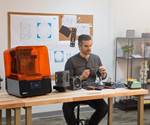California Moldmaker Remains Open During Coronavirus Shelter in Place Order
M.R. Mold & Engineering, after consulting legal counsel, has determined its work is in support of “critical manufacturing”, which is exempt from the edict.
On March 4, California Governor Gavin Newsom issued executive order N-33-20, declaring a state of emergency in response the Covid-19 outbreak, followed by an order to shelter in place on March 19. On March 20, M.R. Mold, a maker of tooling for liquid silicone rubber and thermoplastics, announced that its support of the healthcare and public health sector as a critical manufacturer, exempted the company and it would remain open. The company stated that 95 percent of its business is in “medical silicone.”
On March 22, California’s State Public Health Officer designated a list of “Essential Critical Infrastructure Workers”, including Healthcare and Public Health (HPH) and Critical Manufacturing. HPH covers:
Manufacturers, technicians, logistics and warehouse operators, and distributors of medical equipment, personal protective equipment (PPE), medical gases, pharmaceuticals, blood and blood products, vaccines, testing materials, laboratory supplies, cleaning, sanitizing, disinfecting or sterilization supplies, personal care/hygiene products, and tissue and paper towel products.
Critical Manufacturing entails:
Primary Metals Manufacturing, Machinery Manufacturing, Electrical Equipment, Appliance, and Component Manufacturing, Transportation Equipment Manufacturing Products made by these manufacturing industries are essential to many other critical infrastructure sectors.
M.R. Mold has 30 employees and recently moved from an 18,000-ft2 facility into a 23,000-ft2 space, which has given them more room to expands its shop and technical center. M.R. Mold’s Geri Anderson told Plastics Technology that the company is planning to hold an Open House and 35th anniversary celebration once the Covid-19 crisis has settled.

M.R. Mold & Engineering, which is celebrating its 35th anniversary this year, recently moved from an 18,000-ft2 facility into a 23,000-ft2 space.
Related Content
-
Using Data to Pinpoint Cosmetic Defect Causes in Injection Molded Parts
Taking a step back and identifying the root cause of a cosmetic flaw can help molders focus on what corrective actions need to be taken.
-
How to Design Three-Plate Molds, Part 1
There are many things to consider, and paying attention to the details can help avoid machine downtime and higher maintenance costs, and keep the customer happy.
-
Three Key Decisions for an Optimal Ejection System
When determining the best ejection option for a tool, molders must consider the ejector’s surface area, location and style.
















